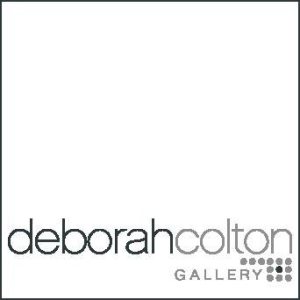Digging into an artist’s archive is… well, viagra sale it’s so, so interesting. #nerdalert.
This project has definitely invited more “story time” into my life – and I do love story time.\n\nI continue to scan images and am still coming across some surprising moments and some real characters – artists – who Suzanne photographed so many years ago. I’m eager to learn more about the shows that Suzanne participated in and what the exhibitions themselves tell us about Houston/Texas art history.
To continue where my last post left off, this project has me while scanning images also reading press articles on Suzanne’s solo exhibitions and organizing postcards and exhibition flyers and catalogues as well.
In the mix of documents Suzanne saved I found this statement from the late Walter Hopps – former director of The Menil Collection – who sat for a portrait session with Suzanne:
“Suzanne Paul should now be recognized as one of the finest photographers to come out of Houston. Her essential medium is black and white photography and her most important subject matter is portraiture. The portraits in this exhibition largely focuses on people associated with the arts of Houston or those who pass through.
Not all photographers are skilled printers of their own work. Paul is a superb printer achieving areas of deep black in line with her instinct for chiaroscuro lighting of the subject.
Having been the subject of one of Paul’s portraits, I have experienced the directness and honesty of her work. She has caught an unidealized view of who I am.” – Walter Hopps
Suzanne Paul, Walter Hopps
An enigmatic portrait of Walter Hopps was included in Being Human, a solo exhibition of portraits curated by Clint Willour, then Executive Director Curator at the Galveston Arts Center, for Fotofest in 2001. Being Human collected and presented together over sixty black and white portraits of Houston-based artists, curators, and art patrons photographed by Paul and was one of the largest presentations of her portraiture in the entirety of her career – most of the images never having been shown before. The selection of images in Being Human heavily relates to our project in it’s current phase as we’re prioritizing the images that document our art History and many of the same were included in the Fotofest exhibitions. Too, the work presented was standout and spirited.\n\n Review: Being Human: Portraits by Suzanne Paul, in
Houston Center for Photography’s Spot Magazine, Winter 2002 Issue
presented and published by Deborah Colton Gallery in the 2016 FotoFest Biennial
Recontextualizing Suzanne Paul’s photography of Houston arts and artists, Proof actively acknowledged the recognizable talent of key figures that represent the arts in Houston in the national and international arenas. In reviewing this selection from this artist’s photo archive, it becomes very clear that there are hidden gems, many never before seen, to share across generations. We find left to us a treasure of brilliant images, an invaluable resource for our community that testifies to the artistic climate that has emerged and evolved in the city since the creative boom of the 1970s — preserved for us by one of its most dedicated participants.
Suzanne Paul, “The Art Guys, (1999), excerpt from the Proof catalogue
***
Content originally published by Theresa Escobedo, here, on 11.18.16
